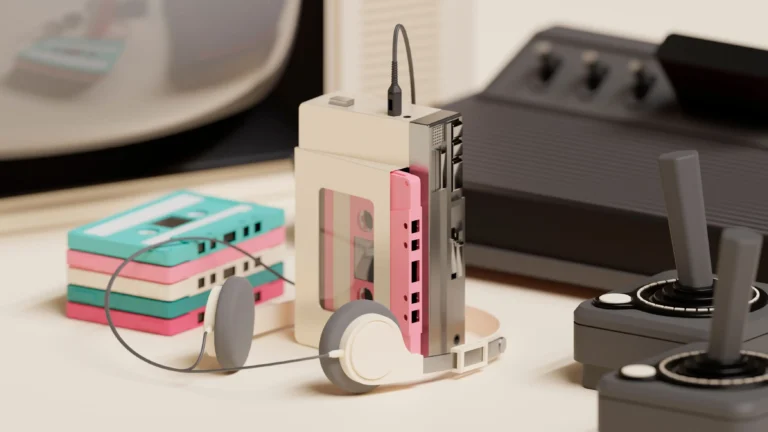Introduction
Do you have a load of scrap metal and don’t know what to do with it? Then your best bet is to just recycle it! It’s devastating to see vast amounts of metal waste finding their way into landfills every year when they could be recycled and given a second life. Of course, a lack of awareness around scrap metal recycling has led to these circumstances. But do you know metals have a unique ability to be recycled repeatedly without losing their quality? Plus, this practice can actually bring you money.
Recycling scrap metal not only clears clutter but addresses a critical environmental need by repurposing the trash in our landfills and cutting down the pollution caused by new metal production. And let’s not forget the immense employment opportunities this industry creates. Sounds interesting? Then, let’s dive into the nitty-gritty of recycling metal scrap to understand its impact on your pocket and the planet.
Understanding Scrap Metal
Scrap metal is a broad term covering various discarded metals that can be recycled and repurposed. Such scraps usually originate from products at the end of their life — like car parts, construction materials, household appliances, and industrial waste.
Now, recycling scrap metals is crucial as it helps cut down on landfill clutter, saves resources, and uses less energy compared to producing new metals. There are two primary categories of scrap metal: ferrous and non-ferrous.
- Ferrous metals contain iron and steel and have magnetic properties. They are typically found in automobiles, steel beams, and household appliances. Because of the magnetic nature of ferrous metals, scrap yards use large electromagnets on excavators to handle their loading, unloading, and movement within the yard. However, these metals are heavier and more prone to rust. Most of the recycled ferrous metals in the U.S. come from items such as appliances, tires, and furniture. In 2018, these items contributed to about 27.8% of all recycled ferrous metals, totaling roughly 4.7 million tons, according to the Environmental Protection Agency.
- Non-ferrous metals include copper, aluminum, nickel, brass, tin, lead, gold and silver. These metals retain their chemical properties when recycled, making them suitable for infinite recycling. They are non-magnetic and are found in items like electrical wires, batteries, and plumbing. They are lighter in weight and more resistant to corrosion. While non-ferrous scrap constitutes just 10% of the overall recycled material in the U.S., it contributes to half of the total earnings generated by the scrap recycling industry.
Recycling Metal Scrap: The Eco-Smart Move
Metal recycling dramatically reduces our ecological footprint by lowering the immense energy demands associated with mining and processing new metals. Take for example, The Connecticut Department of Energy and Environmental Protection states that recycling one aluminum can conserves ample energy to operate a 100-watt light bulb for nearly four hours. Again, in the United States alone, steel recycling annually conserves adequate energy to provide heating and lighting for 18 million households. That’s huge!
All these stats are proof that recycling scrap metal protects our planet’s precious finite resources. This process not only saves a massive amount of energy but also benefits the economy by creating jobs in the recycling and manufacturing sectors, offering industries a more affordable material option.
Local Recycling Resources: Where to Take Your Scrap
Using online directories is the simplest way to find recycling facilities that work with scrap metal around your region. These platforms list facilities by zip code and provide detailed information on recycling centers that accept various types of metals, from copper and aluminum to steel and iron. Municipal websites are another valid source that list authorized recycling facilities.
Before dropping in with your load of scrap metal, always contact the centers to know if they have any specific requirements about the types of metals they accept. These criteria are usually based on the condition and purity of the metals and knowing them beforehand prepares you for the next step. The standard guideline dictates that products must consist of at least 50% metal, so separate items that meet this criterion.
Additionally, keep in mind that in an effort to deter theft, recycling centers may require sellers to show ID and sometimes provide proof of ownership. This added layer of security protects the business while ensuring a trustworthy recycling system.
Scrap Metal Recycling: Preparatory Steps
- Scrap Collection: When you bring scrap metals to a nearby scrap yard, they first weigh your materials. At some places, you can remain in your car as someone unloads and weighs your scrap, then gives you a ticket based on the weight for payment. Besides individual collectors, metals are also gathered through curbside recycling programs or from big sources like scrap dealers. However, curbside and public recycling usually accept only everyday items, such as cans. This is when scrap recycling facilities step in to handle a wider variety of metals.
- Sorting Metals: Start by meticulously sorting metals into separate categories. Differentiating between ferrous (magnetic) and non-ferrous metals is important for efficient recycling. This step ensures each type of metal is processed correctly, maximizing its value and recyclability. Scrap yards utilize multiple techniques for sorting metals, including visual checks, spectrometers, magnets, and electrical currents, to ensure metals are grouped correctly and meet quality standards without contamination.
- Cleaning Scrap: Prior to recycling, scrappers clean the metal to remove any contaminants or non-metal components. This might involve stripping away insulation from copper wire, pulling out nails from construction scrap, or cleaning off any oils and residues. A clean batch of scrap metal leads to a more efficient and less costly recycling process.
- Safety First: Recyclers should verify that all workers wear the appropriate safety equipment, including gloves, goggles, and steel-toed boots, to eliminate the chances of cuts, abrasions, and other injuries. Safety protocols for handling sharp objects and heavy materials should be implemented. Facilities must train staff in first aid and emergency response to create a safe working environment.
Inside the Scrap Metal Recycling Centers
At metal recycling centers, raw scrap undergoes a transformation into reusable materials through a series of sophisticated processes. Initially, the collected metals are sorted using advanced technology, such as magnets for ferrous metals and eddy currents for non-ferrous materials, ensuring precise separation.
Following sorting, the metals are cleaned to remove any impurities or non-metal parts. They are then shredded into smaller pieces, which increases the surface area for melting, making the process more efficient. The shredded metals are melted in large furnaces, each metal type at its specific melting point, and then purified to guarantee quality.
Finally, the molten metal is formed into ingots or sheets, ready for manufacturing into new products. This cycle of recycling conserves natural resources, reduces energy consumption, and minimizes the environmental impact of discarded metals, showcasing the power of modern recycling technologies and methods.
Household Metal Disposal Done Right
- Do’s:
- Identify what’s recyclable: Common recyclable metals include aluminum cans, tin cans, and small appliances. Check with your local recycling program for specifics.
- Clean your metals: Rinse cans and containers to remove food residue for a hassle-free and cleaner recycling process.
- Use curbside recycling: For everyday household items like cans, take advantage of curbside recycling services if available in your area.
- Don’ts:
- Avoid non-recyclable items: Certain items, like aerosol cans or paint cans, may not be accepted. Verify their acceptability with your recycling provider.
- Don’t mix metals with other recyclables: To facilitate the recycling process, keep metals separate from plastics and paper.
- Accumulating Metal:
- Store metals until you have enough: Keep a designated bin for metals. Once full, take it to a local scrap yard or recycling center, making your trip more efficient and impactful.
Business of Metals: The Industrial Recycling Model
Companies can effectively manage their scrap metal and adhere to strict recycling standards by adopting an industrial recycling model. This approach involves setting up a systematic process for the collection, sorting, and recycling of scrap metal in order to reduce waste and verify that materials are recycled responsibly. To guarantee their recycling practices meet high environmental and safety standards, many businesses pursue certifications.
The Institute of Scrap Recycling Industries (ISRI) certification, for instance, is a notable marker of responsible recycling, offering guidelines that focus on environmental, health, and safety management practices. Securing this certification demonstrates a company’s commitment to sustainability and enhances its reputation, showing a strong dedication to conserving natural resources through conscientious scrap metal recycling.
Turn Scrap into Cash: Profiting from Metal Recycling
Making money from metal recycling is a smart move for both your wallet and the environment. To maximize earnings, always stay informed about market prices, which fluctuate based on demand and supply. Metals like copper, aluminum, brass, and stainless steel tend to fetch higher prices due to their widespread use and recycling efficiency.
Building strong relationships with local scrap yards can also tip the scales in your favor. That’s because these facilities offer valuable insights into the most sought-after metals and might provide better deals to regular clients. By staying informed about the market and establishing connections with your scrap yard operators, you can optimize your profits on metal recycling, turning waste into a lucrative and eco-friendly venture.
Creative Reuse: Scrap Metal Upcycling Projects
Repurposing scrap metal into art or functional items offers an innovative way to upcycle items that would otherwise be discarded. From old car parts transformed into eye-catching sculptures to copper wires reshaped into unique jewelry, the possibilities are endless.
Even simple tin cans can be revamped into stylish planters or atmospheric lanterns for your home and garden with the right amount of creativity and craftsmanship. Such DIY hacks not only give new life to metal scraps but also infuse your space with a personal flair, proving how scrap metal can be turned into invaluable treasures with a bit of imagination and skill.
Legal Side of Scrap: Avoiding Metal Theft
Legislation in many regions requires recyclers to adhere to strict guidelines, which often include obtaining proper documentation from those selling scrap. This aspect verifies the legitimacy of the metal’s source and helps track transactions, thereby deterring illegal sales.
Required documentation generally includes valid ID, proof of ownership, and sometimes photographs of the scrap being sold. Such regulations are put in place to clamp down on the theft of valuable metals by ensuring that all scrap metal transactions are transparent and traceable. Compliance with these legal standards helps maintain a trustworthy recycling environment, protecting both the industry and the wider community from the impacts of illicit metal sales.
Recycling Scrap Metal: Our Parting Reflections…
To wrap up, scrap metal recycling is more than just turning old into new; it’s about taking responsibility for building a healthier planet, invigorating the economy, and conserving precious resources. Through this feature, we have tried to get you the ins and outs of metal recycling — from understanding ferrous and non-ferrous metals to partnering with the right recycling facilities and understanding the legalities. Your involvement in recycling scrap metal and guiding others to do the same can help our planet thrive. Because the more we recycle, the less we mine! Let’s come together and support a circular economy.




Be Good Do Good – Fashion, The Right Way
Get the Be Good newsletter straight to your inbox. Learn about the fashion industry’s burning problems and sustainability tips, as well as new sustainable and ethical brands.